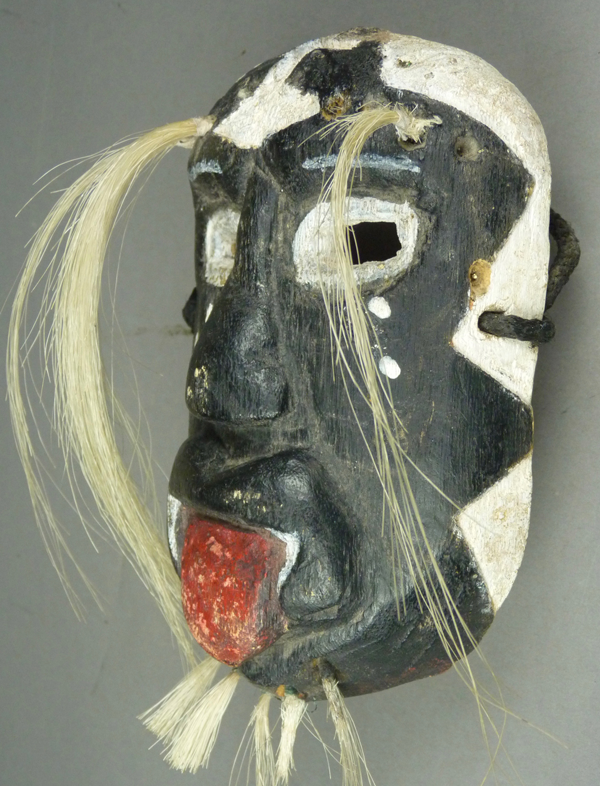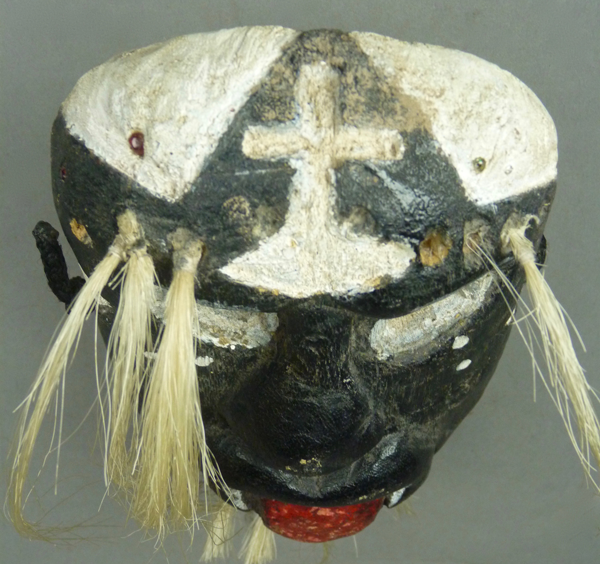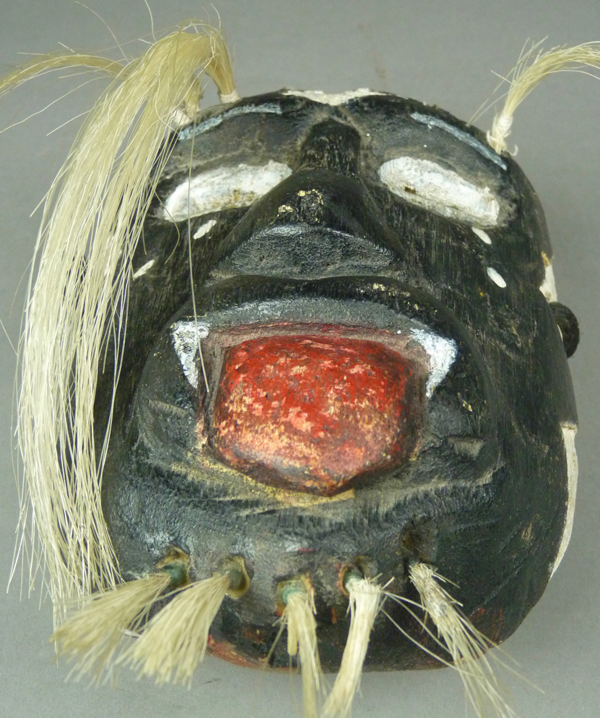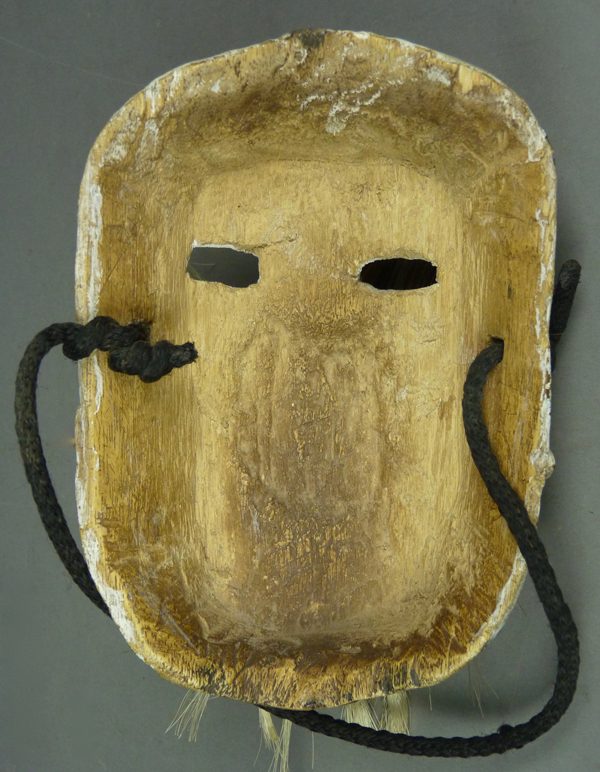During a series of posts about older Rio Mayo Pascola masks in my collection, I overlooked the one I will show you today. I bought this mask from Tom Kolaz in 2014. It had been recently collected from its elderly dancer , Don Moises of Tetanchopo, Sonora, who reported that he had been given the mask in the 1950s, and it was already 10 or 20 years old when he received it. So it might date to the 1930s or 1940s. Here it is.
Over the years the relief carved lips of this mask have been painted black, which causes them to seem less impressive than they actually are.
The forehead cross, its base, and the large triangles of the rim design are all carved out below the surface of the mask (recessed). In other words, despite the simplicity of design, and the recent paint that obscures some aspects, this is an impressive older mask. It comes down to us from a time when Pascola masks were primarily tools for a Pascola dance performance, and only secondarily artistic creations, if at all.
This mask doesn’t even have carved or painted wedges on the cheeks. Later it seems someone added painted dots, or “tears.”
I really admire the prominent base for this cross, and the way that the rim design frames the cross. Although the forehead cross is often painted more ambiguously, so that it could refer to Christ or the Sun, there is no ambiguity here; the Pascola dancer is Christian, and he prays for Christ’s protection.
As usual on Rio Mayo masks, there is no chin cross.
This mask is 7 inches tall, 4 5/8 inches wide, and slightly over 2 inches deep.
Because this shallow mask provided so little room for the dancer’s nose and mouth, those contact areas are heavily stained from use, along with the rim, which is usually more readily stained.
Over the next few weeks I will move away from Mayo Pascola masks in order to show some recent interesting acquisitions from other Mexican cultures.
Bryan Stevens





